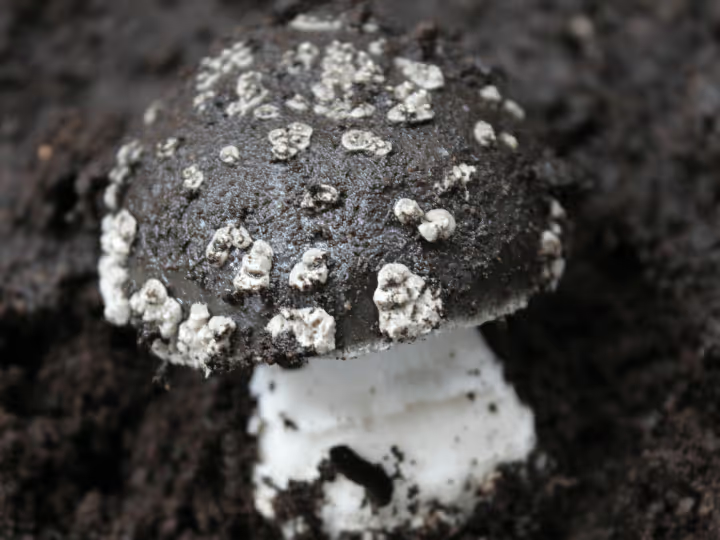Fungi is a wild and diverse kingdom, with many unturned stones. To many it is unexplored ground. The Fungi Foundation’s Glossary will give you a good understanding of the language of mycologists, biologists, scientists and other interested in fungi.
This will give you the tools to digest reading, videos and other material on fungi, and not get lost. Some terms might sound familiar but could mean something completely different in the context of fungi. Come back here anytime you come across an unfamiliar word and we will happily guide you!
This glossary is based on the information in our Field Guides on Chilean Fungi. Get yours here.
Search for words:

Refers to fills/pores/wrinkles/teeth, broadly attached to top of stem

Refers to gills/pores/wrinkles/teeth, partially attached to top of stem

A remnant of the partial veil left as the mushroom matures. It often leaves a ring of membranous tissue around the stem (stipe)

A class of fungi that produce their spores in sac-like cells called asci

Fruit body of a basidiomycete fungus

A fungus whose spores develop in basidia. Basidiomycetes include the majority of familiar mushrooms and toadstools.

Feeding on living cells of other organisms

Top part of a basidiomycete mushroom that carries the fertile tissue

Complete fruit body of the fungus (ie. cap, stem, gills, etc). Sporophore and sporocarp are other names also used

Growing on dung

A cobweb-like partial veil consisting of fine silky fibers

Liquefying at maturity, common among Ink caps

Mycorrhizal type where the fungus forms sheathes around plant rootlets (often of a tree), growing between but not penetrating the cells of the plant root, and providing the plant with water and nutrients while the plant supplies sugars to the fungus

Mycorrhiza type in which fungal hyphae penetrate cell walls of host plant

Spore-bearing structure of mushrooms

Disc-like structure found at base of stem, consisting of a compact mass of mycelium

Body of a fungus, most of which is underground or hidden within wood

The association between the mycelium of a fungus and the rootlets of plants. Little is known of the associations between funga and plants in Australia; hence, the important questions on habitat and nearest tree/plant in the mapping scheme

Covering of the gills while very young that breaks open, often leaving remnants on the stem (stipe)

A reproductive cell (usually single-cell) capable of developing into a new individual without fusion with another reproductive cell, and released by fungal fruit body

Spore material left on paper when the cap is left for a period of time — the colour can be an important identifying characteristic

Stalk or stem of the fruiting body of the fungus

A protective membrane that initially surrounds an entire fruitbody

The remnant of the universal veil which is sometimes left at the base of the stipe



Fungus of the day
A striking and rare species of fungi native to the temperate forests of southern Chile. It grows in Nothofagus and Araucarias forests. It was discovered in 2014 by Giuliana Furci, by field mycologist and foundress of the Fungi Foundation. The pileus is dark, often blackish or deep gray, adorned with numerous white, star-like scales that resemble a galaxy of stars against a night sky, hence the name “galactica”. It has white lamellae and a white, firm stipe.